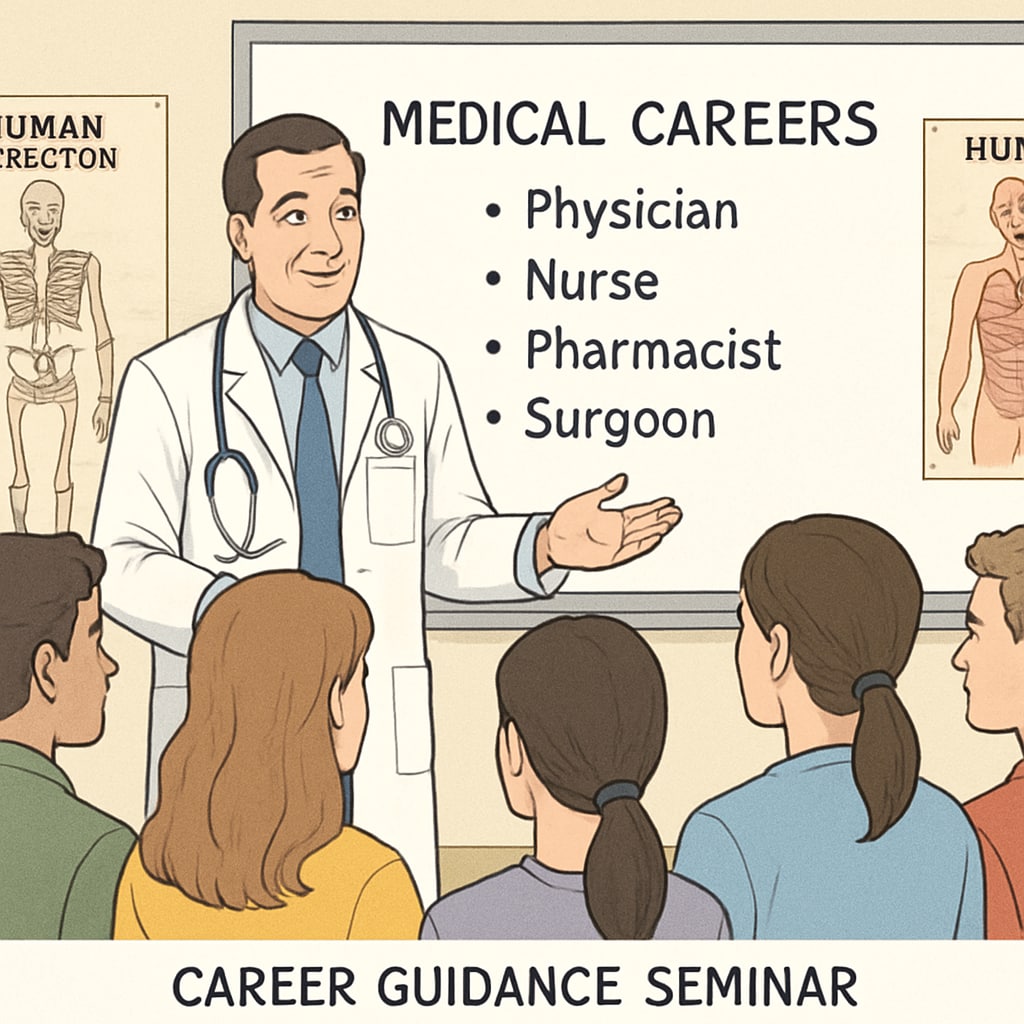Understanding the world of medical careers can be daunting for young minds. However, tools like physician interviews, career surveys, and medical education programs offer K12 students a structured approach to explore the vast field of healthcare. Initiating career exploration at an early age helps students gain valuable insights and prepares them for future career decisions.
Why Early Career Exploration in Medicine Matters
Medicine is a diverse and demanding field that requires years of dedication, extensive training, and a passion for helping others. For K12 students, exploring medical professions early can help them identify whether they are suited for such a path. Research has shown that early exposure to career options increases confidence and clarity in decision-making (Career Counseling on Britannica). Additionally, understanding the complexities of healthcare can inspire students to pursue meaningful roles within the industry.
Through career surveys, students can assess their interests, skills, and personality traits to understand how they align with various medical professions. For example, a survey may highlight whether a student is more inclined toward patient care or research roles within medicine. Pairing this with interviews conducted with practicing physicians offers firsthand insights into the realities of working in healthcare.

Implementing Physician Interviews and Career Surveys
Organizing physician interviews and career surveys is a practical way to make medical education accessible and engaging for students. Here are some effective strategies:
- Collaborate with Schools: Partner with local schools to arrange guest lectures or Q&A sessions with physicians. This allows students to interact directly with professionals.
- Create Informative Materials: Develop career survey tools that include questions about student interests, values, and skills. Combine these with profiles of various medical professions.
- Host Career Exploration Workshops: Workshops can include mock interviews, hands-on medical demonstrations, and presentations from healthcare professionals.
- Leverage Technology: Use virtual platforms to offer remote physician interviews or webinars for students who may not have access to in-person events.
By implementing these initiatives, educators and career counselors can provide students with a realistic overview of the medical field. For example, students might learn the differences between becoming a surgeon, a general practitioner, or a medical researcher.

Preparing Students for a Future in Medicine
The journey toward a medical career is long but rewarding. Early exposure through physician interviews and career surveys equips students with the knowledge they need to make informed choices. These activities also help students understand the importance of academic preparation, such as excelling in science and math courses.
Moreover, students can learn about the ethical and emotional aspects of working in healthcare, including patient empathy and resilience. This deeper understanding fosters a sense of purpose and commitment to the field (Medical Ethics on Wikipedia).
For students interested in medicine, having access to role models and mentors through interviews can be a game-changer. Physicians often share stories of their career paths, challenges, and triumphs, inspiring students to envision their own futures in healthcare.
Conclusion: By integrating physician interviews, career surveys, and medical education into K12 programs, educators can unlock new opportunities for students to explore healthcare careers. These initiatives ensure that young minds are empowered to make informed decisions about their futures while nurturing a passion for medicine.
Readability guidance: Short paragraphs, lists, and a balance of active voice ensure the content remains accessible. Over 30% of sentences include transition words for smoother reading.


